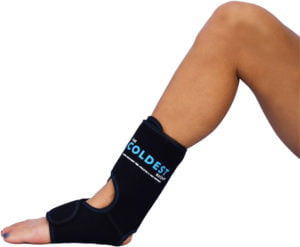How To Recover From Pickleball Injuries
Pickleball is one of the fastest-growing sports in America. It is a paddle sport that is a combination of elements that’s of tennis, badminton, and ping-pong using a paddle and plastic ball with holes. There are many reasons for Pickleball’s popularity in recent years. It is a game that is appropriate for players of all ages and skill levels. It is an easy sport for beginners to learn and a very social game. It can also be quite a challenging and competitive game.
Participating in one or more sports is a vital part of a healthy, active lifestyle — good for the heart, good for respiration, and good for building and maintaining muscular strength. Anyone who has even been involved in sports has likely suffered an injury of one kind or another. While there is no way to prevent all of these injuries, you can do things to lessen your risk. Injuries caused by straining and overuse may be prevented by doing pre-and post-sport stretching.

Pickleball may also introduce players to injuries commonly seen with any other sport. It is fast-paced, and thus players must execute quick pivots as they change directions in moving to hit the ball. Here are some of the most common injuries seen in Pickleball players.

Pickleball Elbow– is referred to as Lateral Epicondylitis in the medical field. Performing repetitive motions can lead to strain and inflammation. The joints or muscles involved in the activity can become inflamed or aggravated due to overuse.
Shoulder Strain– one of the most common injuries for Pickleball players is a general strain on the shoulder. It involves tearing or stretching of a muscle or tendon that attaches to a bone. It can reduce your shoulder’s full range of motion.
Achilles Tendonitis– is an inflammation characterized by multiple tears within the Achilles tendon, that is often caused by a sudden increase in the amount or type of repetitive activity.
Heel Bruising– is a common Pickleball injury that also develops over time. You can get a bruised heel from the repeated force of your foot striking the ground. It can also happen from a single injury, such as jumping from a big height onto your heel.
Trips and falls are inevitable and when players do fall, they instinctively tend to stretch out their arms to protect themselves. Depending on the severity of the injury you may be off the court for a few days, weeks, or months. However, recovery from mild strains is typically short and can begin to heal within a few days. It is always good to remember traditional recovery methods involving RICE or Rest, Ice, Compress and Elevate.
Rest
Avoiding the use of the injured area. A short period of immobilization is beneficial but should be limited to the first few days after injury.
Ice
Apply an ice pack to help reduce the pain and swelling within 24 hours every 20 minutes. The Coldest Ankle Ice Pack evenly distributes coldness for pain relief and injury treatment and molds your body perfectly. This ankle ice pack is made up of premium quality gel and is the best ice pack for a sprained ankle.
Compression
Wrap the area to help decrease swelling. The wrap should be snug, but make sure you have proper circulation.
Elevate
Raise the injured body part above heart level so that gravity can move fluids away from the injured area.
Pickleball can be addicting, adequate recovery time is always suggested especially if your body is feeling extra fatigue. Be careful to not push past your limit to avoid injury. Of course, stretching the muscles before playing is critical, wear appropriate attire and listen to your body. Being in relatively good shape is also important.
Pickleball is fun, a good exercise, and can relieve stress; if you haven’t tried it, give it a shot!





